“Products based on TMR magnetic sensors will expand more applications in the field of smart homes and smart cars. Because TMR materials have the characteristics of low working magnetic field, high sensitivity, and good thermal stability, the TMR effect has a broader application prospect than the GMR effect. Research and development of TMR materials with high room temperature TMR value, good thermal stability, low RA value and low cost will be the focus and key of future work in the field of magnetoresistive materials.
“
I. Overview
1. The concept of magnetoresistance: the resistance of a material will increase or decrease due to an external magnetic field. The amount of change in resistance is called magnetoresistance. The phenomenon that the resistivity of a substance changes in a magnetic field is called the magnetoresistance effect. Like the Hall effect, the magnetoresistance effect is also caused by the Lorentz force of the carriers in the magnetic field. Starting from general magnetoresistance, the development of magnetoresistance has experienced giant magnetoresistance (GMR), colossal magnetoresistance (CMR), anisotropic magnetoresistance (AMR), tunneling magnetoresistance (TMR), direct impulse magnetoresistance (BMR) and abnormal Magnetoresistance (EMR).
2. Magnetoresistive applications: Magnetoresistive effects are widely used in magnetic sensing, magnetometers, Electronic compasses, position and angle sensors, vehicle detection, GPS navigation, instrumentation, magnetic storage (magnetic cards, hard drives) and other fields. Magnetoresistive devices are widely used in industries, transportation, instrumentation, medical equipment, mining and other fields due to their high sensitivity and strong anti-interference ability, such as digital compasses, traffic vehicle detection, navigation systems, counterfeit banknote detection, location measurement, etc. .
3. Tunneling magnetoresistance effect (TMR): The tunneling magnetoresistance effect refers to the effect that the tunneling resistance changes in the ferromagnetic-insulator film (about 1 nanometer)-ferromagnetic material with the relative direction of the two ferromagnetic materials. . The TMR effect exhibits a very attractive application prospect due to its unique advantages such as large magnetoresistance effect and high magnetic field sensitivity. This effect is the scientific basis of magnetic random access memory (MRAM) and magnetic read sensors in hard disks.
2. The physics of tunneling magnetoresistance (TMR)
From the point of view of classical physics, the sandwich structure of ferromagnetic layer (F1) + insulating layer (I) + ferromagnetic layer (F2) cannot realize the penetration of electrons in the magnetic layer, but quantum mechanics can perfectly explain this. Phenomenon. When the magnetization directions of the two ferromagnetic layers are parallel to each other, the electrons of most spin subbands will enter the empty state of the majority of the spin subbands in the other magnetic layer, and the electrons of the minority spin subbands will also enter the other magnetic layer. In the empty state of a few spin subbands, the total tunneling current is relatively large. At this time, the device is in a low resistance state; when the magnetization directions of the two magnet layers are antiparallel, the situation is just the opposite, that is, the electrons in the majority of spin subbands Will enter the empty state of the minority spin subband in the other magnetic layer, and the electrons of the minority spin subband will also enter the empty state of the majority spin subband in the other magnetic layer. At this time, the tunneling current is small, and the device is High resistance state. It can be seen that the tunnel current and tunnel resistance depend on the relative orientation of the magnetization of the two ferromagnetic layers. When the magnetization direction changes, the tunnel resistance changes, so it is called the tunnel magnetoresistance effect.
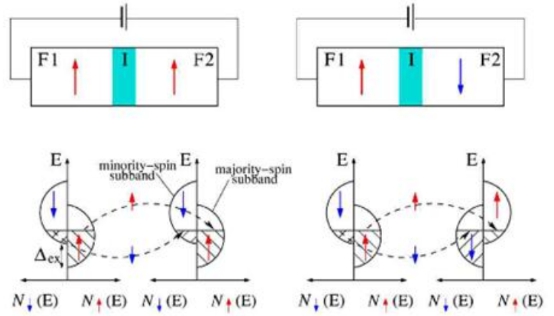
Fig.1 The dual current model when the magnetization direction of TMR is parallel and antiparallel
TMR magnetic sensor uses the principle of magnetic resistance change caused by magnetic field change, so we can measure the change of external magnetic field through the resistance change of TMR magnetic sensor. The fabrication of the actual TMR magnetoresistive sensor is far more complicated than the sandwich structure of ferromagnetic layer + insulating layer + ferromagnetic layer. In addition to the sandwich structure of ferromagnetic layer + insulating layer + ferromagnetic layer, the basic structure also adds a top electrode layer (upper contact) and a bottom electrode layer (lower contact) above and below, and the two layers of electrodes directly contact the adjacent magnetic layer. The bottom electrode layer is located above the insulating substrate (Insulating), which is wider than the bottom electrode layer and located above the substrate (Substrate).
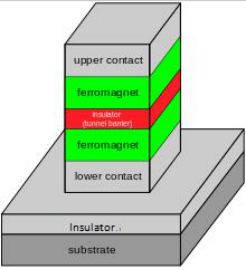
Figure 2 Structure of TMR magnetoresistive sensor
Three, the characteristics of TMR magnetoresistive sensor
Based on the magnetoresistance effect, the magnetic signal can be transformed into an electrical signal. Except that the colossal magnetoresistance (CMR) effect is limited by the temperature range and the working magnetic field and is difficult to apply, the other three magnetoresistance effects of AMR, GMR, and TMR can all be applied to magnetism. In the sensor.
At present, AMR sensors have been applied on a large scale; GMR sensors are in the ascendant and develop rapidly. TMR sensing technology was first applied to read heads of hard disk drives, which greatly improved the recording density of hard disk drives. It integrates the high sensitivity of AMR and the wide dynamic range of GMR. Therefore, in various magnetic sensor technologies, TMR magnetic sensors have unparalleled technical advantages, and their performance indicators are far superior to other types of sensors. Table 1 below provides a comparison of sensor technologies for the three effects.
Table 1 Comparison of three MR sensing technologies
|
Sensor chip |
AMR |
GMR |
TMR |
|
structure |
Bridge |
Bridge |
Bridge |
|
Magnetoresistance ratio |
3 |
15 |
50~300 |
|
Typical signal amplitude |
1.5 |
1.5 |
15 |
|
Output temperature coefficient |
-0.35 |
-0.1 |
-0.1 |
|
Zero offset output |
±2 |
±64 |
±3 |
|
Zero temperature drift coefficient |
±2 |
±5 |
±3 |
|
Magnetic field dynamic range |
1~10 |
2~50 |
1~100 |
|
range of working temperature |
-40~+150 |
-40~+150 |
-40~+200 |
|
Signal-to-noise ratio |
65 |
70 |
90 |
|
Integrability |
Easy to integrate |
Easy to integrate |
Easy to integrate |
Various high-sensitivity magnetic sensors made of TMR materials are used to detect weak magnetic fields and sense weak magnetic field signals. This type of sensor has the advantages of small size, high reliability, and wide response range, and can meet the increasingly demanding requirements of automation technology, household appliances, trademark recognition, satellite positioning, navigation systems, and precision measurement technology. Sensors made based on TMR technology have the following characteristics:
1. High sensitivity-the intensity of the detected signal is getting weaker and weaker, and the sensitivity of the magnetic sensor needs to be greatly improved. Applications include current sensors, angle sensors, gear sensors, and space environment measurement.
(1) Current sensor: it needs to detect the current of nA level, even if the magnetic gathering ring is added, the detection accuracy of the magnetic sensor itself needs to reach the level of nT
(2) Angle sensor:
(3) Gear sensor: The refinement of the gear and the maximization of the distance between the sensor and the gear cause the magnetic signal to become very weak
(4) Space environment measurement: resolution
(5) Marine defense based on magnetic anomaly detection, etc.:
2. Temperature stability-More application fields require the sensor’s working environment to become more and more severe, which requires that the magnetic sensor must have good temperature stability. Industrial applications include the automotive electronics industry.
(1) Automotive electronics industry: From the external environment of dripping water to ice to the inside of the hot engine, it must work
(2) Smart grid: it can meet the once-in-a-hundred-year cold, and can also stay in an enclosed body with severe heat
(3) Aerospace: In the case of protection, the operating temperature span is also very large
3. High-frequency characteristics-With the promotion of application fields, the working frequency of sensors is required to be higher and higher. Application fields include water meters, automotive electronics industry, and information recording industry.
(1) Water meter: it can detect the instant flow of 0.0001m³ (> 10 kHz)
(2) Automotive electronics industry: precision control of components requires higher and higher signal frequencies (> 200 kHz)
(3) Information recording industry: requires data transmission rate> 1 GHz
4. Low power consumption-Many fields require extremely low power consumption of the sensor itself, which can extend the service life of the sensor. Used in implanting magnetic biochips, compasses, etc. in the body.
(1) Magnetic biochip implanted in the body
(2) Use battery-powered water/gas meters, and micro-power smart meters
(3) Outdoor/field magnetic sensors (magnetic anomaly detector, electronic compass, handheld magnetic field detector, etc.)
(4) Magnetic sensors for aerospace
5. Anti-interference-In many fields, there is no appraisal for the use environment of the sensor, and the sensor itself is required to have good anti-interference. Including electronic compass, financial head, etc.
(1) Electronic compass: The stray magnetic field generated by most circuit boards is more than 50 times the earth’s magnetic field;
(2) Financial head: The intensity of the magnetic field generated by the various motors inside is more than 50 times that of the magnetic ink magnetic field;
(3) POS machine magnetic head: the magnetic field of the mobile phone signal is more than 5 times of the magnetic field of the magnetic head;
(4) Water meter, gas meter, etc.;
(5) Automotive electronics: The magnetic field generated by the engine, moving parts and various wires can be above 10 Gs
6. Miniaturization, integration, and intelligence-to achieve the above requirements, this requires chip-level integration, module-level integration, and product-level integration
(1) Chip-level integration: sensor + ASIC digital output, standardized output
(2) Module-level integration: realization of chip + external magnet + mold + circuit basic functions
(3) Product-level integration: module + product functionalization and intelligence
Fourth, the advantages of TMR technology in the field of current detection
The current sensor is capable of transforming the current information of the measured object into an electrical signal that meets certain standards or other required forms of information output according to a certain law, so as to meet the needs of information transmission, processing, storage, Display, recording and control, etc. Require.
There are many current sensor detection technologies, such as resistance shunts, current transformers, Hall current sensors, fluxgate current sensors, Rogowski coils, magnetoresistance effect current sensors, magnetostrictive current sensors and light current sensors, etc. . Among them, magnetic sensors represented by Hall are the most widely used in modern industry and electronic products.
Magnetic sensors use the intensity of the induced magnetic field to measure physical parameters such as current, position, and direction. Magnetic sensors include Hall elements, Anisotropic Magnetoresistance (AMR) elements or Giant Magnetoresistance (GMR) and The tunnel magnetoresistance effect (Tunnel Magnetoresistance, TMR) and other components are sensors with sensitive components.
Ordinary devices are very simple to measure the current through the device, because the current level is relatively high, in the order of milliamperes or even amperes. With the popularization of mobile smart devices, the application of the Internet of Things, and the development of biotechnology, the operating current of today’s devices is as low as microampere level or even lower, so more complex equipment is required for measurement. Magnetic sensors with Hall elements as sensitive elements usually use a magnetic concentrating ring structure to amplify the magnetic field and increase the sensitivity of the Hall output, thereby increasing the volume and weight of the sensor. At the same time, the Hall element has the defects of high power consumption and poor linearity. Although the sensitivity of the AMR element is much higher than that of the Hall element, its linear range is narrow. At the same time, the magnetic sensor with AMR as the sensitive element needs to set the Set/Reset coil to perform the preset/reset operation, which causes the complexity of its manufacturing process. The configuration of the structure increases the power consumption while increasing the size. The magnetic sensor with GMR element as the sensitive element has higher sensitivity than the Hall current sensor, but its linear range is lower.
TMR (TunnelMagnetoresistance) element is a new type of magnetoresistance effect sensor that has been industrially applied in recent years. TMR technology was originally used in magnetic read-write heads in hard disks. Therefore, the accuracy, accuracy, and lifetime reliability of magnetic field detection are in hard disks. After decades of market testing. When detecting the current, the magnetic field generated by the current on the copper bar and the wire is detected, and then the current magnitude is obtained through a certain calculation of the chip. Compared with the previously discovered and practically applied AMR elements and GMR elements, it has a larger resistance change rate. Compared with the Hall element, the TMR element has better temperature stability, higher sensitivity, lower power consumption, better linearity, and does not require an additional magnetic ring structure; it has a better temperature than the AMR element Stability, higher sensitivity, wider linear range, no need for additional set/reset coil structure; compared to GMR elements, it has better temperature stability, higher sensitivity, lower power consumption, and wider Linear range. The figure below is the schematic diagram of the fourth-generation magnetic sensing technology.
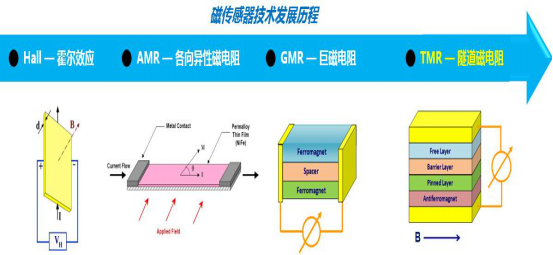
Figure 3 The development history of magnetic sensing technology
The following table is a comparison of the technical parameters of Hall element, AMR element, GMR element and TMR element, which allows you to see the pros and cons of various technologies more clearly and intuitively.
Table 2 Technical parameters of each magnetic sensor
|
Technology |
Hall |
AMR |
GMR |
TMR |
|
Power consumption (mA) |
5~20 |
1~10 |
1~10 |
0.001~0.01 |
|
Size (mm) |
1×1 |
1×1 |
2×2 |
0.5×0.5 |
|
Sensitivity (mV/V/Oe) |
0.05 |
1 |
3 |
20 |
|
Working range (Oe) |
1~1000 |
0.001~10 |
0.1~30 |
0.001~200 |
|
Resolution (mOe) |
500 |
0.1 |
2 |
0.1 |
|
Temperature characteristics (℃) |
<150 |
<150 |
<150 |
<200 |
|
Response time (ns) |
>1000 |
10 |
10 |
0.1 |
|
Temperature drift (PPM/K) |
3000 |
3000 |
3000 |
400 |
Current sensors based on TMR chips have outstanding performance in high sensitivity, temperature stability, anti-interference, miniaturization, integration, intelligence and low power consumption. As the fourth generation of magnetic induction technology. Sensitivity, resolution, power consumption, and temperature characteristics have been improved by more than 10 times, and the full chip-level process control can provide reliable quality and reasonable prices.
5. Practical application of TMR magnetic sensor products in various fields
TMR magnetic sensor products have a wide range of applications, including industrial control, financial instruments, biomedical, consumer electronics, and automotive fields. Its typical features are low power consumption, small size, and high sensitivity.
1. In the field of flow meters, smart water meters and smart heat meters generally use battery power, so the power consumption of the sensor is very demanding. Current water meter solutions use reed switches, low-power Hall devices, and Wiegand sensors. Either the frequency response is very low and the measurement accuracy is insufficient, or the power consumption is high and the battery life is short. The smart heat meter using Wiegand sensor has complicated circuit, poor reliability, and inaccurate measurement of small flow. In addition, the temperature performance of the traditional electric meter scheme using the Hall device is relatively poor. Due to the low sensitivity, an additional magnetic focusing ring is required, which leads to an increase in volume and cost. At present, two TMR ultra-low power magnetic sensors are used to measure the speed according to the magnetic field changes of the impeller rotation, and the instantaneous flow rate of the water meter is obtained, and the power consumption is very low. Among smart meters, the meters based on TMR magnetic sensors are smaller in size, lower in cost, higher in accuracy, and better in temperature characteristics than traditional Hall device meters.

Figure 3 Smart water meter

Figure 4 Smart gas meter
2. In the field of electric vehicles, there are many places where electric vehicles need to detect current, such as BMS, MCU, PDU, on-board charger, DC-DC, etc. Current detection and monitoring in the industry, except for some high-end models, which will use more accurate HALL closed-loop current sensors with high and faster response speed are commonly used in HALL open-loop solutions. Although the HALL open-loop current sensor is not as good as the HALL closed-loop solution in terms of accuracy, linearity, response speed, temperature drift characteristics, etc., automotive electrical engineers generally care more about the economy of its ability to meet general working requirements (4- 10 U.S. dollars), the market price of the current domestic HALL open-loop solution is trending toward 3 U.S. dollars.
The HALL open-loop current sensor does have a certain degree of economy, but its relatively large volume takes up a lot of space and is increasingly criticized by engineers. Especially in the electric vehicle industry, the miniaturization of power modules is the direction that various automakers are competing to study.
TMR (Tunneling Magnetoresistance Effect) current sensor, this solution can realize a small-sized chip to accurately detect the current on the copper bar or wire, and its accuracy, linearity, response speed and temperature drift characteristics are comparable to the HALL closed-loop solution, and The cost of this solution is even more advantageous than the HALL open-loop solution.

Figure 5 Microampere TMR current sensor
3. In the field of financial instruments, domestic financial equipment mainly uses inductance coils and indium antimonide magnetic heads. No matter the detection accuracy and signal-to-noise ratio, or the size of the magnetic head, it cannot be compared with the financial magnetic heads of other developed countries, especially Japan. More serious is the problem of product consistency, the mass production process is unstable, and mass production is impossible. Today, the global (including China) high-end financial head market is monopolized by Japanese companies. TMR magnetic recognition sensor is a new type of pure-impedance banknote detector head specially used for the detection and recognition of the magnetic characteristics of banknotes, bank notes and securities. The banknote module and magnetic card reader have the characteristics of high sensitivity, high signal-to-noise ratio, and high frequency response.
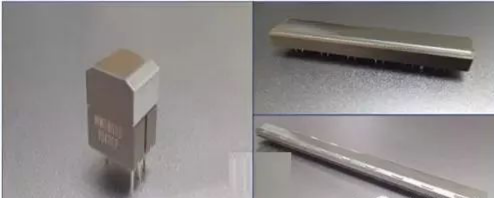
Figure 6 (left) single-channel TMR financial head (top right) 6-channel TMR financial head (bottom right) 18-channel TMR financial head
4. In the non-destructive inspection of steel wire ropes such as elevators, mines, bridges, etc., products based on TMR magnetic sensors can use weak magnetic detection to accurately locate the surface defects and internal defects of the rope, and the accuracy is compared with the current tens of thousands or hundreds of thousands of inspection systems. Higher, the price is more close to the people, and the test is more convenient.
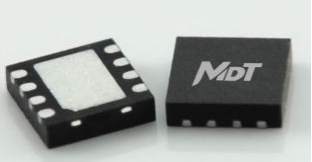
Figure 7 High-precision and low-cost TMR chip-level sensor
5. In the field of intelligent parking management system, compared with traditional ground-sensing coils, ultrasonic, RFID, infrared, etc. to determine whether there is a car in the parking space, the TMR linear magnetic sensor can identify the disturbance characteristics of the vehicle to the geomagnetism, with high accuracy, Small size, easy to install and maintain, and work around the clock.
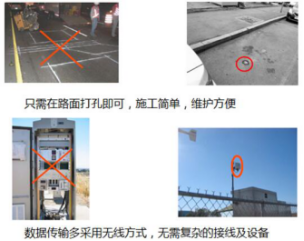
Figure 8 TMR sensor used for parking management
6. In the medical field, such as the experiment of combining the biofilm on the surface of the magnetic beads in the blood tank with different viruses in the blood, the volume of the magnetic beads in the blood can be used to determine the patient’s condition, and the TMR magnetic sensor can accurately monitor the magnetic field. Whether the volume of the bead becomes larger.
Products based on TMR magnetic sensors will expand more applications in the field of smart homes and smart cars. Because TMR materials have the characteristics of low working magnetic field, high sensitivity, and good thermal stability, the TMR effect has a broader application prospect than the GMR effect. Research and development of TMR materials with high room temperature TMR value, good thermal stability, low RA value and low cost will be the focus and key of future work in the field of magnetoresistive materials.
The Links: BSM25GP120 MG30G1BL3


0 Comments for “Introduction to Tunnel Magnetoresistance Technology (TMR) and Its Application”